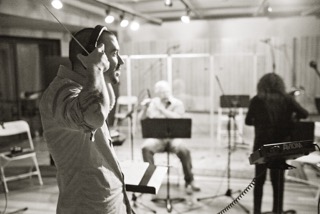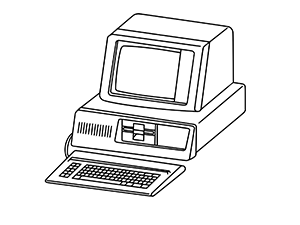Mixing for Mobile Devices with the M-Ref
The M-Ref is a dedicated mobile speaker that emulates the speaker of specific smartphones and tablets. This is something music and sound professionals have sorely needed for many years. I recently spoke with founder, Jim Welch on how it all started.
Discussion
101: Hey Jim, this M-Ref has been on our wishlist for years. How did you end up creating it?

JIM: I was making mobile game audio for clients and they'd say "this has too much bass or "it's distorting" and each build was night and day from what I heard before. I just kept looking for a solution. Like most people, I was using Airfoil to stream directly to my phone and the sound was just off. It wasn't the best reference for mobile games. Then, I started to send myself files via Dropbox but the back and forth of hearing my revisions took immense amounts of time. With thousands of files to check, it became overwhelming. So it was less than ideal, but I kept looking around for a solution.
At this point, I got more into coding and started a programming startup, kind of a Skype for kids, which integrates gaming so they can have their face in-game with their character. In the process of porting it to the iPad, I was back to trying to check the file. The arduous task of making revisions and sending back to the device made me drop everything, buy an iphone speaker and wire it up to make this work. It was time to finally solve this problem. Well, one year of R&D later we had a prototype for M-Ref which turned out to be far more than just a speaker.
101: The early M-Ref prototype looked completely different and was white with a tiny speaker. Now you have emulation features, larger speaker and more complexity
JIM: Yeah, so a couple reasons for the change. The initial prototype had the components but still didn't sound right. The case was repurposed to fit a larger speaker. It was a hassle to make and actually got destroyed in shipping so I went through another design phase, rebuilding with better materials. As the internal parts kept changing, so did the external housing and it was starting to get better and better. As far as the emulation software, we had our own PCB circuit board designed by an electrician. The board and components were are carefully thought out, with each of the tiny pieces doing their part. Then we wired up an iPhone speaker and it just wasn't working and sounded off. We kept tweaking the potentiometers for EQ parameters and couldn't seem to nail the sound. The low end response was just so bad, mostly due to their tiny size. This was all modeled around the iPhone 4 but we kept missing the mark. It was incredibly frustrating. It then hit us. If we shifted to software, we could get it to work right. Working digitally would give us EQ, compression, limiting and most importantly, the ability to emulate a ton of devices.
101: There are quite a few out there
JIM: Yeah and the physical limitations of speakers create this moving target. The iPhone 6 speaker is quite a bit different than one found in a Samsung. With emulation software, we were able to start with a good speaker and then par it down to match any speaker that size or smaller. So, from the Iphone 6 to the new ipad as well as the Samsung devices
101: So the larger speaker gave you more possibilities in regards to modeling a wide range of devices
JIM: Yeah and I think this really falls into simulation. The change from just a hardwired speaker to software really dissapointed some people, like this one guy who does everything analogue, outside the box. Since he does everything on the mixing board, he just cannot use the software with his setup.
101: Thats a pretty rare case these days. Few are really going completely analog, especially in interactive audio
JIM: Yeah, there is a stigma with some people who feel is has to be the exact speaker or it's not the same. Some don't want the hassle of another plugin. We are avtually looking at releasing one via Ardurino or Rasberry Pi inside the board, so it could still do digital processing, but everything enclosing in the box. You would'nt need any software for that one. The challenge there is that those board anren't really made for audio and the quality is quite low. This is all early R&D so it will be interesting to see how it unfolds.
101: Is that a 2 inch speaker inside the M-ref?
JIM: Yes it's 2 inches we really have to tame the hell out of it to get close to the original. There is some heavy modeling going on here. I know a guy that worked at Apple and although he couldn't talk about proprietary hardware, he did say that there is a ton of DSP going on in these iPhones. This goes so far beyond hooking up a simple EQ to a speaker. We are trying to match what they are doing on the software end while simultaneously improving the hardware too. We are currently tweaking all the presets and fine tuning everything
101:A big part of creating mobile game audio is testing how it actually sounds on the target device. Back in the day my studio had 50+ phones, each having to be tested for sound. Aside from having different speakers, each one had a different General MIDI soundset, so a melody meant to be played by a horn, was now being played by a cowbell. Fast forward to today, with silky playback of actual high res files on iPhones and Androids. Most of us have been using Airfoil for years to stream directly to one device. That audio is delayed and degraded in the process though. How are you able to match such a tiny source on a larger speaker with different hardware?
JIM: I've been using Ozone's spectrograph and EQ matching to analyze what we've built and compare to the actual device. We are constantly tweaking and optimizing to get closer to an exact match. As a final test after all the work, I'll play some samples on my phone then immediately play on the M-Ref with the preset. This gives me a general idea if something is off and I can go back to the lab. This will be a continually evolving process and we can push an update of each version. Currently, we are working on the iPhone 7, so people can look forward to mixing directly to the device. It's really a balance between technology, where we have this graph of each speaker, and the real world playback scenario, were something may still sound off.
101: Having the 2 inch speaker casts a wider net for future emulations. The small form factor has kind of taken over the world of consumer speakers. There is a sea of odd shaped, tiny speakers. It's becoming more important to have playback translate to these real world speakers.
JIM: And then you hsve these little bluetooth speakers or others being plugged into phones - some fold up and others collapse down into almost nothing. With the M-Ref Saturn, we can match so many devices out there. Although Airfoil is nice for your iPhone, you have no idea how the content will sound on a Galaxy tablet, Kindle etc. That's where the M-Ref really excels. You can hop between mixes and really fix a lot of potential problems. You know the Playstation Vita sounds way different than a mobile phone!
101: Indeed, how have you addressed that fact that iPhones are actually just 'enhanced mono' and use one speaker. I believe the Galaxy tablet was the first to actually have true stereo playback. The new iPhone 7 is the the first with true stereo hardware.
JIM: It's crossed my mind to build a stereo unit. Even on the tablets, you can't get real stereo due to the stereo field being so narrow. You really can't get the panning. The mono summing that we do is consistent with most devices out there There's really nothing out there that comes close to what you're doing with the M-ref. Yeah it's really going to only get better as the modeling improves. We picked a speaker that really gets tamed in the process. We are going to back off on our resistors and allow the speaker to be louder.
101: Is M-Ref just you, or is there a team?
JIM: It's really just me and Joe Sanchez, as well as some contractors. This is certainly DIY and very close to me. I want to see it help people. This is all till early stage and we are fixing a lot of bugs. The more detailed feedback we get, the better the M-Ref will become. The intentions here are good and we're going to keep working on this. It's now become my full-time gig
101:Well you've made something that everyones been wanting, for many many years. This is so useful across the entire pro audio and music production spectrum. More people are listing right from their phones anyway. Its impossibly to ignore that, as well as earbud usage.
JIM:The market for this is so wide - I mean, it's music producers, youtubers, post houses.
101: Thanks Jim! We look forward to seeing the latest updates
M-Ref speaker ships with a plugin that goes on your master out. It currently supports VST and we just added the AAX Pro Tools support for Version 1.04. Order yours HERE
Current Supported Devices:
iPhone 6
iPhone6s
iPhone5
iPad 2
iPad mini
Three Android devices







